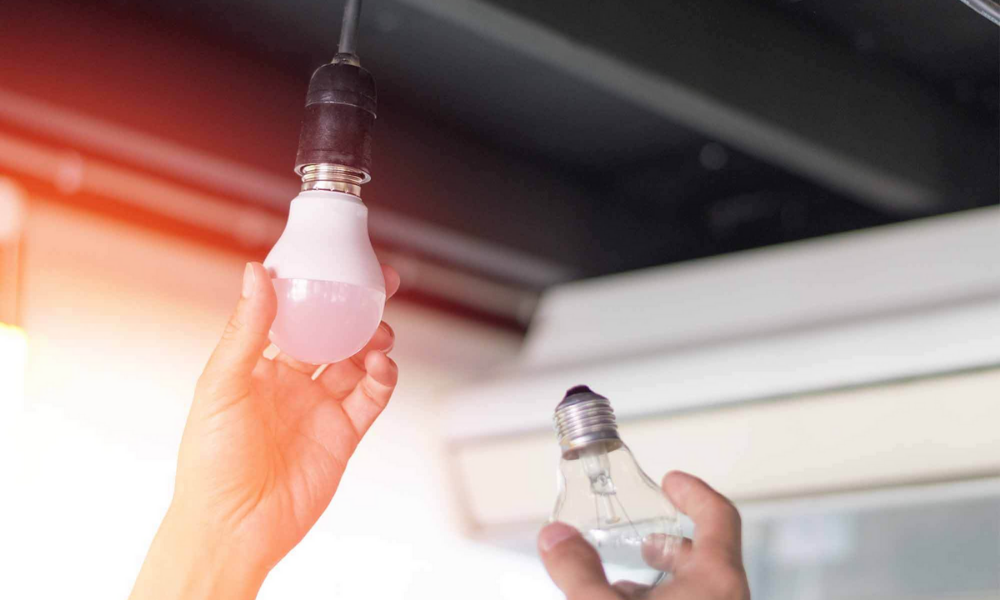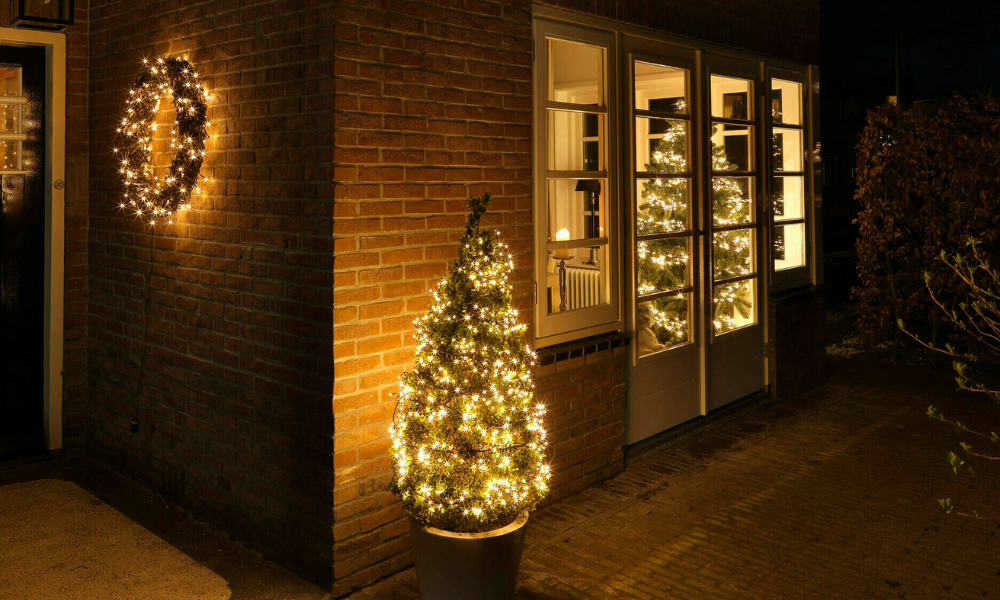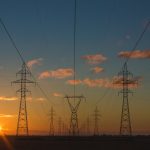The light-emitting diode (LED) is today’s most energy-efficient and rapidly-developing lighting technology. Quality LED light bulbs last longer, are more durable, and provide light quality comparable to or better than other types of lighting. LEDs also use significantly less energy than other lighting technologies.
According to the Canada.gov website, “LEDs use about one-seventh the electricity of incandescent bulbs and one-fourth the electricity of fluorescent bulbs.” In other words, switching from an incandescent or fluorescent light bulb to an LED light bulb can save you a lot of money on your energy bill!
What Are LED Bulbs?
LED bulbs are light bulbs that use light-emitting diodes (LEDs) to produce light. LEDs are a newer technology than traditional incandescent light bulbs, and they have several advantages over incandescent bulbs.
One of the most significant advantages of LED bulbs is that they use much less energy than incandescent bulbs. An LED bulb can use as little as 10% of the energy of an incandescent bulb, resulting in significant savings on your electricity bill. LED bulbs also last longer than incandescent bulbs. An LED bulb can last up to 50,000 hours, compared to only 1,000 hours for an incandescent bulb. It means that you will need to replace your LED bulb less often, saving you money.
LED bulbs are also more environmentally friendly than incandescent bulbs. They produce less heat, are safer to use, and don’t contribute to climate change.
Read more: 6 Energy-Saving Tips for Electronics
How Do LED Bulbs Save Energy?
LED bulbs save energy because they convert more of the electricity they use into light than other bulbs. For example, an incandescent bulb converts only about 5% of the electricity it uses into light, while an LED bulb converts about 80% of the electricity it uses.
LED bulbs save energy by emitting directional light. It means that the light is emitted in a specific direction instead of traditional bulbs that emit light in all directions. LED bulbs also consume less wattage than traditional bulbs, using less electricity. Altogether, these factors make LED bulbs more energy efficient than traditional bulbs, and they are quickly becoming the standard for home lighting.
Read more: Efficiency Nova Scotia LED Solid-State and Recessed Fixtures
What Makes LEDs Unique?
Other lighting kinds, such as incandescent and CFL, are substantially different from LED lighting. The following are some key distinctions:
- LEDs, which are about the size of a speck of pepper and can emit light in various colors, are the light source. White light is occasionally created by combining red, green, and blue LEDs.
- LEDs emit light in a precise direction, eliminating the need for light-trapping reflectors and diffusers. This property makes LEDs more efficient for various applications, including recessed downlights and task lighting. The light must be reflected in the desired direction with other types of lighting, and more than half of the light may never exit the fixture.
- LEDs produce very little heat. On the other hand, incandescent bulbs release 90% of their energy as heat, while CFLs release roughly 80% of their energy as heat.
- LED lighting products have a substantially longer lifespan than traditional types of lighting. A decent LED bulb can last 3 to 5 times as long as a CFL and 30 times as long as an incandescent light.
Products made with LEDs
LED lighting can be found in a wide range of residential and industrial devices, and the list continues to grow year after year. LED technology has advanced at a breakneck pace, resulting in increased product availability, manufacturing efficiency, and lower prices. The following are some of the most prevalent LED product kinds.
Commercial and Industrial Lighting
LEDs are useful for many industrial applications because of their high efficiency and directed nature. Street lights, parking garage lighting, walkway, another outdoor area lighting, refrigerated case lighting, modular lighting, and task lighting are all using LEDs.
Under-Cabinet Lighting
Under-cabinet lighting is a type of lighting used to illuminate the area beneath the LEDs. It is perfect for lighting confined locations such as counters for cooking and reading recipes because they are tiny and directed. Because light hue and directionality can differ, it’s crucial to evaluate products to choose the best fixture for your room.
Recessed Downlights
Recessed downlights are often utilized in kitchens, corridors, bathrooms in homes, and in a variety of workplace and commercial environments. The Department of Energy estimates that over 600 million recessed downlights are used in American homes and workplaces.
LED Replacement Bulbs
LED lamps may now affordably and efficiently replace 40, 60, 75, and even 100 Watt incandescent bulbs, thanks to improved performance and lower prices. To ensure that the product is the proper brightness and hue for its intended usage and location, read the Lighting Facts Label.
LED Christmas Lights
LEDs use a fraction of incandescent bulbs’ energy, and decorative LED light strings like Christmas tree lights are no exception. LED Christmas lights not only save energy but also have the following benefits:
- LEDs are safer than incandescent lights because they are much more relaxed, minimizing the risk of combustion or burnt fingertips.
- LEDs are substantially more resistant to shattering since they are built with epoxy lenses rather than glass.
- Longer lasting: The exact LED string might be used for the next 40 Christmas seasons.
- Up to 25 strings of LEDs can be linked end-to-end without overloading a wall socket, making installation easier.
Look for Lumens, Kelvins, and CRI while Shopping
When buying light bulbs, we looked at watts, but LEDs have changed the game. Because they consume less energy, the amount of watts used to evaluate their brightness isn’t the most significant way to determine their brightness because they have a lower wattage than regular bulbs.
Instead, consider lumens, which are a unit of brightness measurement. The brighter the bulb, the higher the lumen. Lumens can range from 450 lm (about equivalent to a standard 40-watt incandescent bulb or a 5-watt LED) to 2600 lm (roughly equivalent to a typical 40-watt incandescent bulb or a 5-watt LED) (a 150-watt incandescent bulb or 26-watt LED).
In addition to brightness, you’ll need to choose a color temperature for your home, measured in kelvins. The color temperature ranges from a warmer, yellow-toned glow (about 2,700K to 3,500K) to a cooler, soft white (3,500K to 5,000K) to bright sunshine (approximately 2,700K to 3,500K) (5,000K to 6,500K).
What you choose will be determined by the available area and your personal preferences. For example, in your dining room, you might choose softer, warmer lighting, whereas, in your bathroom, you might use brighter, closer to daylight lighting for a mirror area.
Finally, the CRI (Color Rendering Index) should be considered. It is a measurement of how well a light source illuminates the actual colors of an object. At the very least, look for LEDs with a CRI in the mid-to-high 80s.
What Is Smart Lighting?
You can use your smartphone or tablet to control your illumination remotely with smart light bulbs. Smart lighting gives you the convenience of turning on or off your lights across town or the globe.
Some smart light bulbs also allow you to change the color and intensity of your light to create any atmosphere you desire. For example, if you’re throwing a party, you can turn your lights blue and set them to pulse to the beat of the music.
And if you ever forget to turn off your lights, no problem! Smart lighting can do that for you, too. Make sure your bulbs are compatible with a smart home platform like Amazon Echo, Apple HomeKit, or Google Home.
Do LED Strip Lights Raise Electric Bills?
LED strip lights are a great way to light up large areas with ease, and they’re known for their energy efficiency. While they may use more energy than a traditional light bulb, LED strip lights will save you money in the long run because of their long lifespan and low energy consumption. If you were to use LED strip lights for eight hours a day, they would only add $2 to your monthly electric bill.
LED strip lights are the perfect choice for areas like hallways, kitchens, and garages where you need a lot of light but don’t want to break the bank.
How Much Does it Cost to Run a LED Light Bulb for 24 Hours?
A LED light bulb running for 24 hours will cost about $0.24. This price is based on a bulb using 9 watts of electricity and costing $0.027 per kWh. Your mileage may vary depending on the LED light bulb type, your local electricity rates, and how often the lightbulb is used.
What is the difference between an LED and a CFL Light Bulb?
The main difference between an LED and a CFL light bulb is that LEDs are more efficient. A typical CFL lightbulb will use 75% of the energy as a traditional incandescent light bulb, while LEDs use only 20%. It means saving money on your electric bill by switching to LEDs.
CFL light bulbs also contain mercury, which is a toxic heavy metal. If a CFL light bulb breaks, you will need to take special precautions to clean it up. LEDs do not contain any hazardous materials and are therefore safer to use.
Can I Leave my LED Lights On all Night?
Yes, you can leave your LED lights on all night, and they will use very little energy and will not cause any problems with your electric bill. You can also sleep easy knowing that your lights will not cause a fire hazard. Just be sure to turn them off before you leave the house in the morning!
How Much Do LED Lights Save per Month?
LED lights save a lot of energy, so you can expect to decrease your electric bill each month. How much you save will depend on how many LED lights you have, but you can typically expect to save around $10-$15 per month. It is a significant saving, and it’s one of the reasons why LED lights are becoming so popular.
Are LED Lights Safe for the Environment?
LED lights are very environmentally friendly, do not contain any harmful chemicals, and do not produce any harmful emissions. LED lights are recyclable, so you can feel good about using them, knowing that you are doing your part to help the environment.
Conclusion
LED lights are becoming more popular in homes across the globe because they use less energy and last longer than traditional incandescent light bulbs. While there is some debate over whether or not LED lights to save more energy, the evidence seems to suggest that they do. In addition, LED lights to emit very little heat, so they’re a safer option for your home. If you’re looking to upgrade your lighting, consider switching to LED lights. You won’t regret it!
Read More: 10 Guaranteed Ways to Cut Your Lighting Bill










Leave a Reply